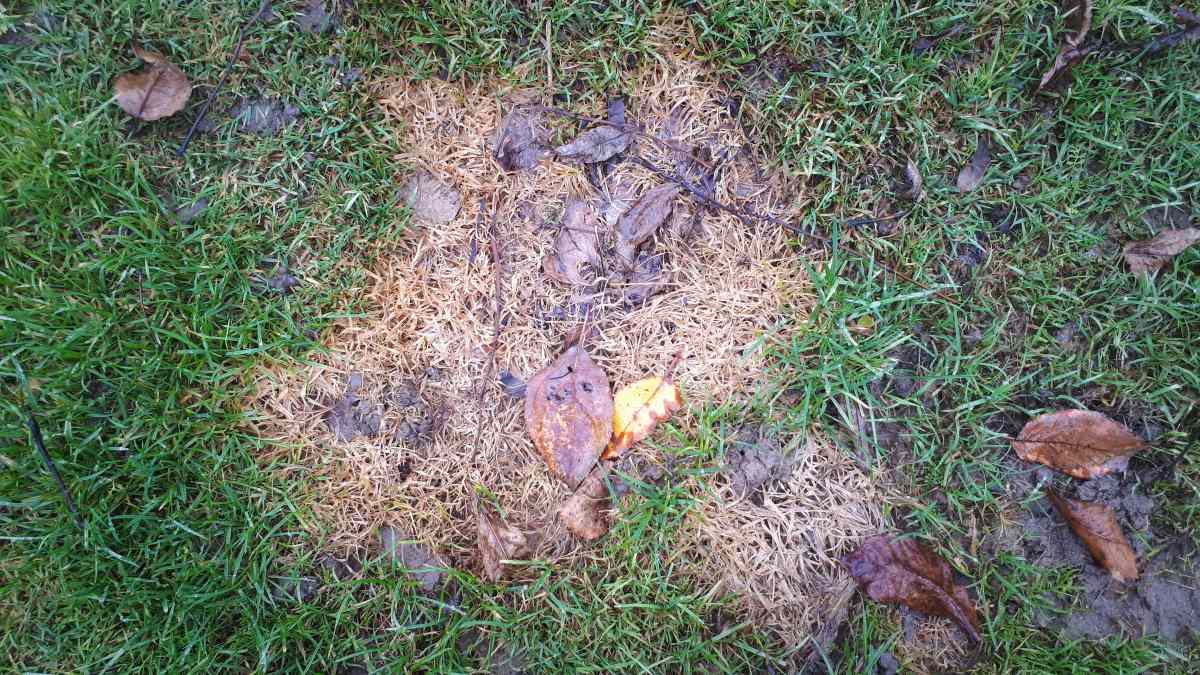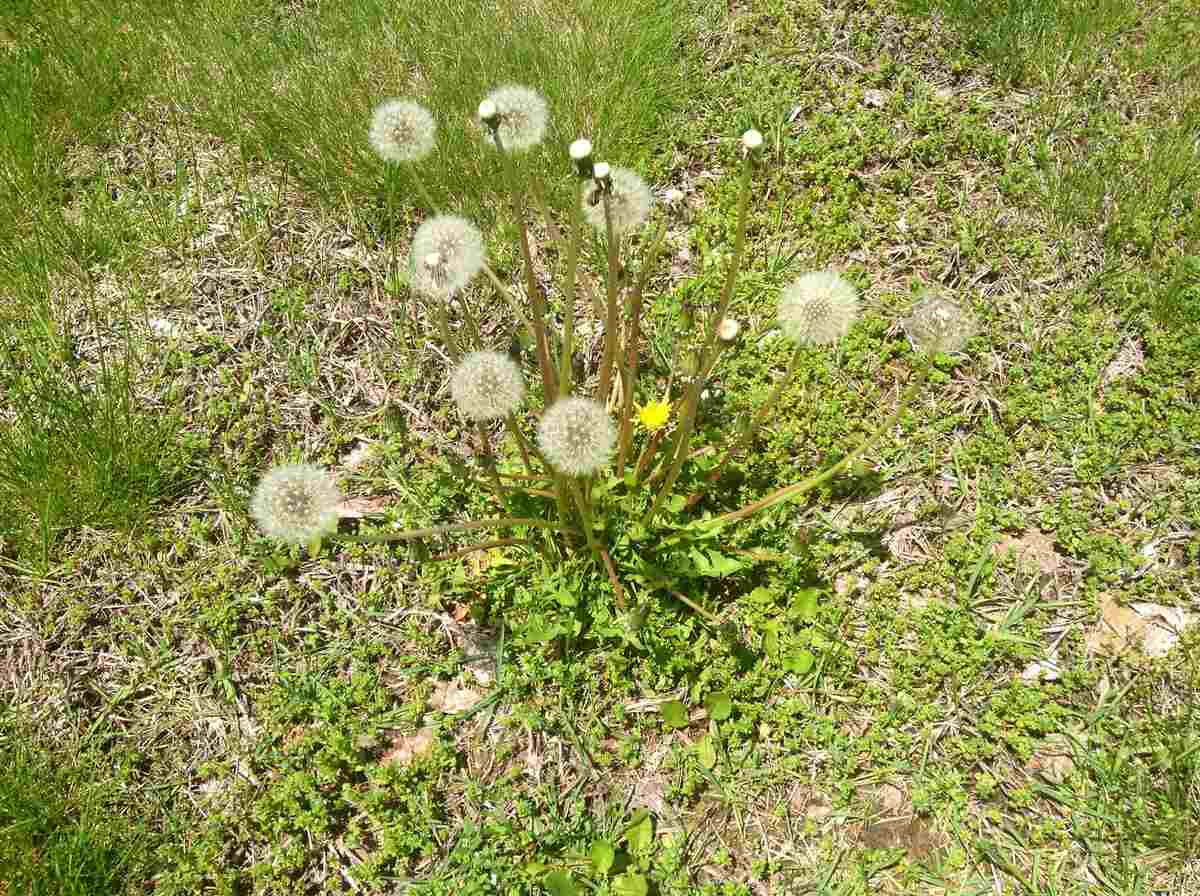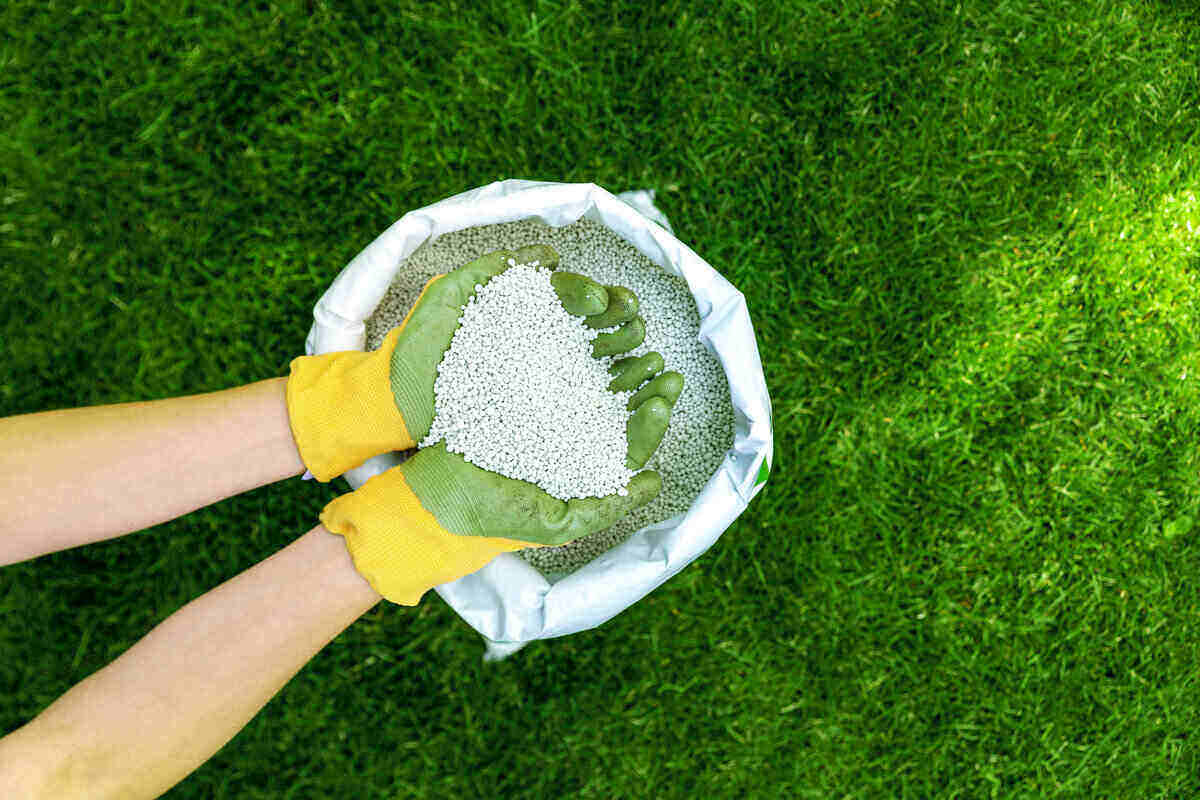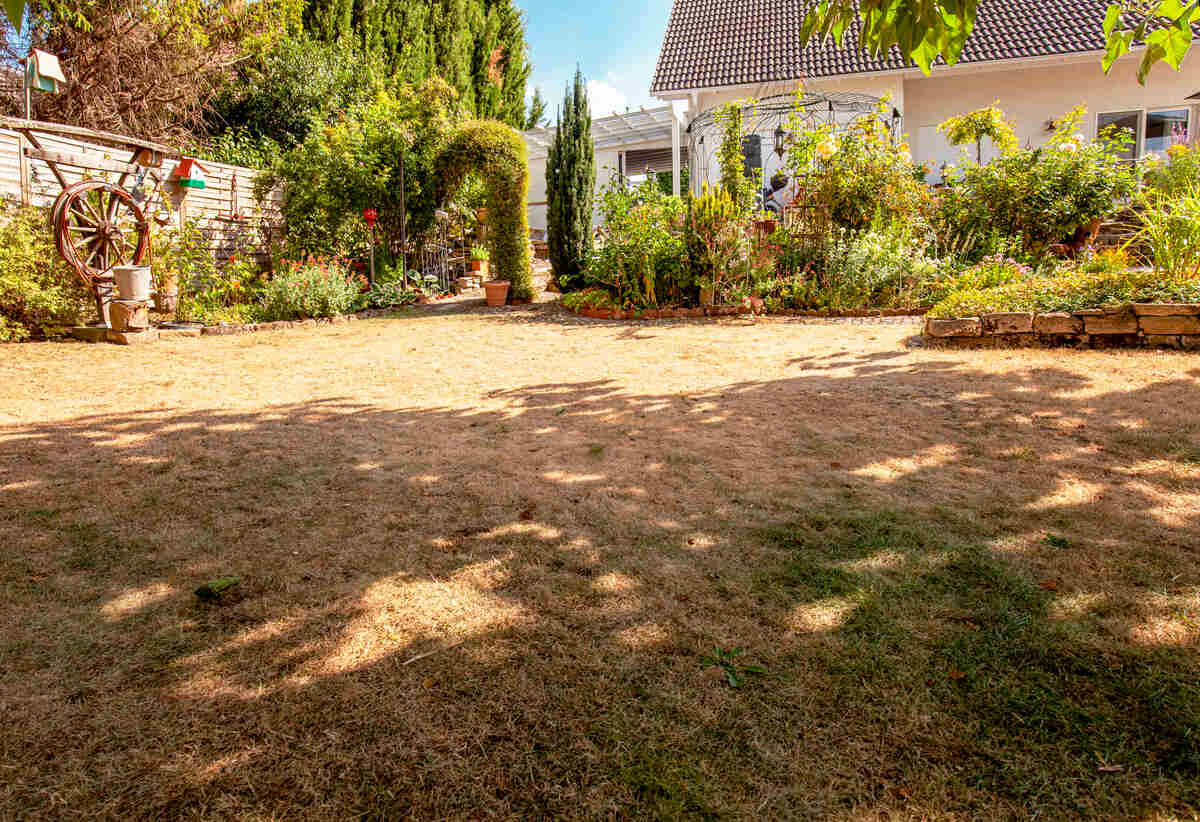
The signs of alkaline soil in your lawn include pale, yellow grass, poor growth, thinning turf, bare spots, and increased susceptibility to diseases and weeds. If fertilization hasn’t helped, that’s another sign.
In addition to explaining common symptoms of high-pH soil, we’ll also share tips and strategies for how to correct this pH imbalance in your lawn.
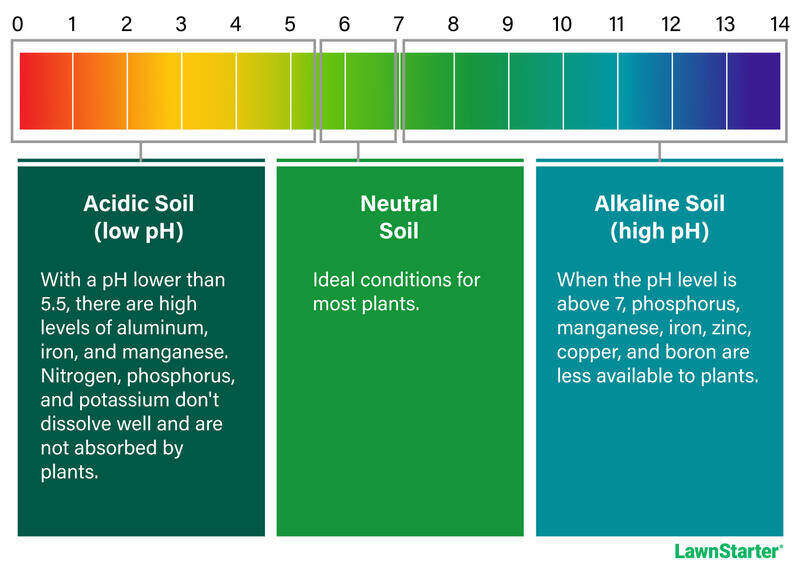
Pale or Yellow Grass
Discolored turf — especially whitish turf — is one of the major indicators of high pH soil. Alkaline soil turns important plant nutrients like phosphorus, manganese, zinc, copper, and iron into insoluble forms. In other words, they’re in the soil but can’t be used by grass or other plants.
A lack of iron causes iron chlorosis in plants, which causes yellowing and whitening of the leaves. In this case, the iron deficiency is due to your grass being unable to use the iron that’s already in the ground.
Do keep in mind that yellow grass can also be a symptom of other lawn issues, including:
- Low soil pH (acidic soil)
- Excess thatch
- Compacted soil
- Nutrient deficiencies unrelated to soil pH imbalances
It’s best to conduct a soil test to rule out a high pH level before lowering the pH of your lawn.
See Related:
Poor Grass Growth
If your grass is growing very slowly, then your lawn’s soil might have a high pH level. We mentioned that certain nutrients become unavailable to plants in alkaline soil, and one of them was phosphorus. Phosphorus is responsible for healthy plant growth, so a lack of it will stunt your turf’s growth.
While that might sound appealing to you — less mowing because your grass grows slower — that also means your lawn will recover from damage slower. Poor growth also means that your grass will eventually become weak and die off.
This leads to the next sign of high-pH soil: a thinning lawn with bare patches.
Thinning Turf With Bare Patches
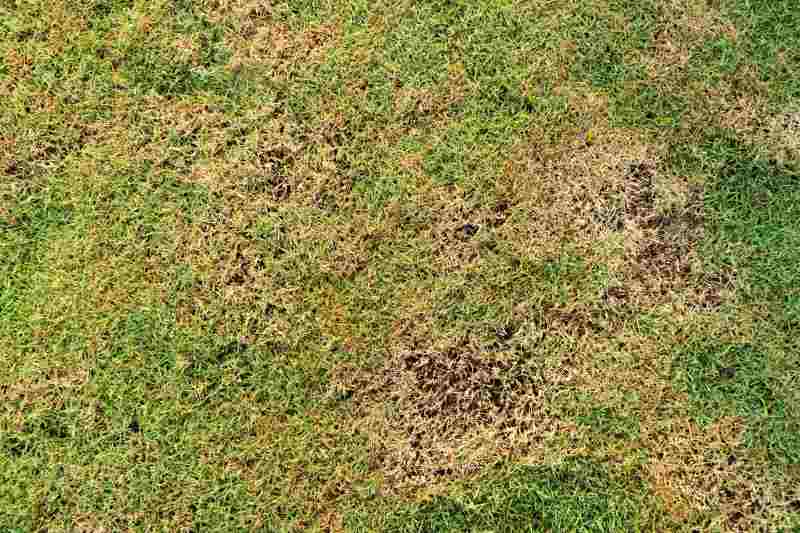
Unhealthy, nutrient-deficient grass eventually dies off, which leads to a thinning lawn, which turns into a patchy one.
You’ll have great difficulty fixing your patchy grass too, no matter if you’re overseeding your lawn or laying down sod. A lack of nutrients means grass seedlings or newly-installed sod will have a harder time growing properly.
See Related:
- How to Overseed a Lawn in 8 Simple Steps
- How to Lay Sod: A Step-by-Step Guide
- How to Plant and Grow Grass Seed in 9 Steps
Ineffective Fertilization Attempts
So, you’ve tried dethatching your lawn, aerating it, and adding new grass, but nothing has worked. Not even fertilizer is helping. Well, that is likely because your soil has a pH imbalance.
Adding granular fertilizer won’t help you if you have alkaline soil, as the nutrients will just become insoluble in the soil. You could use a liquid fertilizer, as grass can absorb nutrients through its leaves, but that would be more expensive and less environmentally friendly. Instead, use chelated fertilizer, which increases nutrient uptake in alkaline soils.
See Related: How to Aerate a Lawn
Diseases and Weeds
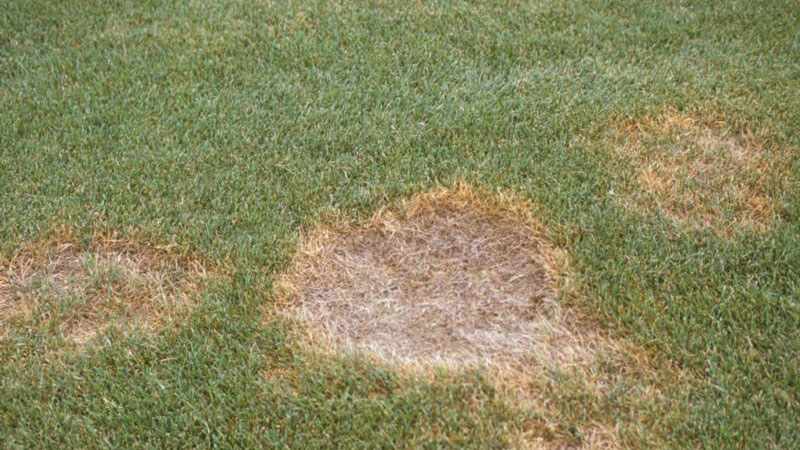
In general, weaker turf is more susceptible to being ravaged by disease, outcompeted by weeds, and destroyed by pests. So, if you see damage on your lawn or more unsightly weeds, your lawn might have a high soil pH.
Some common lawn diseases are more likely in alkaline soil, though. Here are some of them:
Certain weeds also thrive in alkaline soil. The lawn weeds that are common in soils with a pH level higher than 7.0 include:
- Bermudagrass (often a desirable turfgrass, but can be a weed in non-Bermuda lawns)
- Broadleaf plantain
- Clover plants (Trifolium spp.)
- Yellow wood sorrel (Oxalis stricta)
See Related:
- Read Your Weeds: Identify Them to Learn About Your Lawn’s Health
- How to Get Rid of Clover and Not Kill Grass
FAQs About High Soil pH
You can lower your soil pH by adding soil amendments like elemental sulfur, acidic compost (pine needles, citrus peels, and oak bark), or peat moss. However, changing your soil’s pH level may take a while — on the scale of months or even years.
Your soil could be alkaline due to several reasons:
• Location. The western half of the U.S. (except for the Pacific Northwest), such as Utah and Texas, tends to have alkaline soil. Your location also influences soil type and climate.
• Climate. Dry and drought-prone areas tend to have more alkaline soils. This is because there isn’t enough rain to leach out the lime in the soil, which keeps the pH level high.
• Lawn care practices. Excess liming and using alkaline water for irrigation can make your soil more alkaline over time.
The best pH level for grass is slightly acidic to neutral, around 6.0 to 7.0. Anything higher than 7.0 is alkaline and anything lower is acidic.
Some grasses can survive at more extreme pH levels, though (but almost never below 5.0 or above 8.0).
Hire a Pro For a Green Lawn
While high soil pH can cause your lawn to become lackluster, there are many other reasons why your lawn can be unhealthy. But with good lawn care practices, you should be able to prevent these issues from happening.
Not sure what to do about your pale, thin lawn? A lawn care pro can help you make it lush and green again. LawnStarter can connect you with a pro in your area who can mow your lawn, apply sulfur, and more. Hire a local lawn care pro through LawnStarter today.
Sources:
Main Image Credit: ImageSine / Adobe Stock
